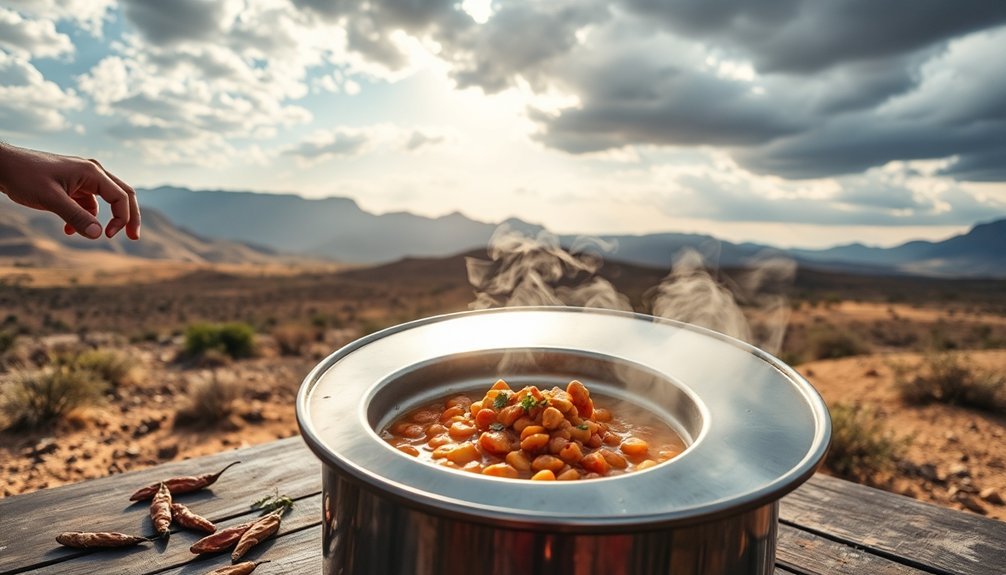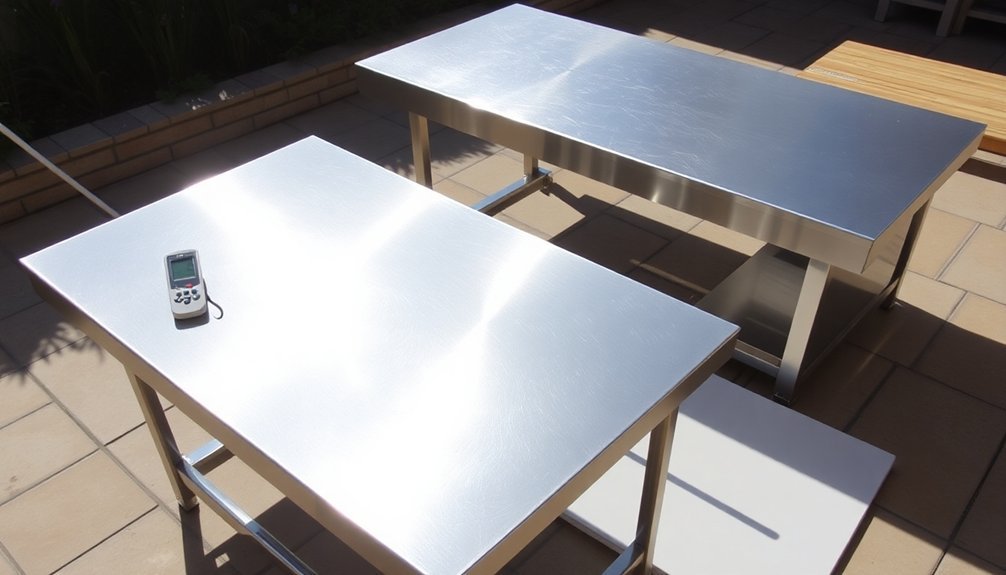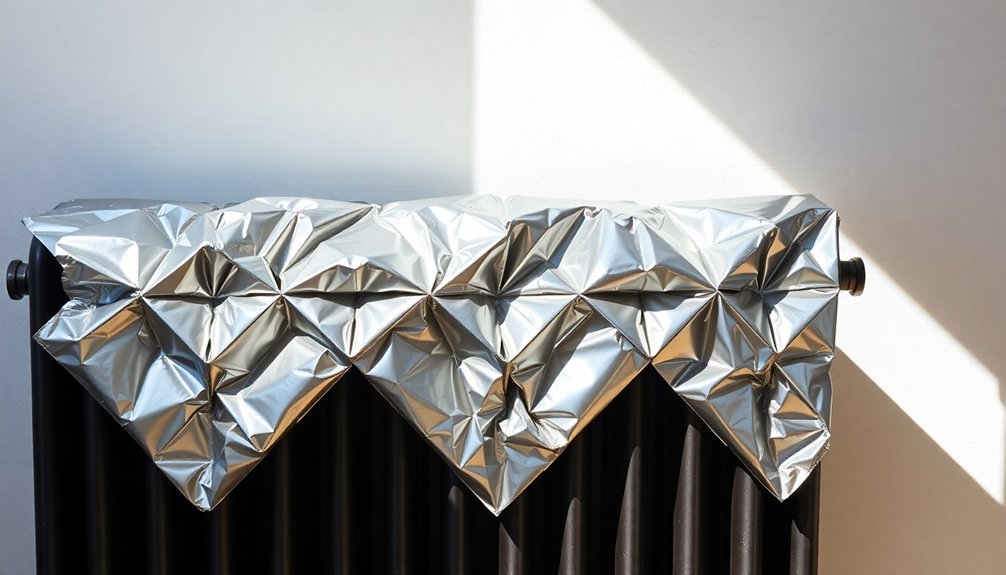To cook effectively with nature, you'll need to adapt your methods to weather patterns and seasonal changes. Your location's sunlight exposure directly impacts cooking times, with peak efficiency between 11 am and 3 pm. Don't let cold temperatures discourage you – solar cooking can reach 350°F even in freezing conditions with proper sunlight. You'll want to modify your equipment seasonally, using weather-resistant materials and versatile tools like cast iron skillets. Consider using smart temperature monitoring devices and adjust your techniques based on local conditions. Understanding these natural elements will transform your outdoor cooking journey.
Sunlight Patterns Across Regions

Have you ever wondered why some places experience months of endless daylight while others have regular day-night cycles? Earth's 23.5-degree tilt creates fascinating sunlight patterns that vary dramatically by region.
If you're living near the equator, you'll experience consistent 12-hour days year-round. These areas typically see wet and dry seasons rather than temperature-driven seasonal changes. However, at higher latitudes, you'll notice more extreme variations.
In mid-latitude regions, you can expect around 15 hours of daylight during summer and nine hours in winter.
The most striking differences occur at the poles, where you'd witness six months of continuous daylight followed by six months of darkness.
At the Arctic Circle, you'll see the midnight sun during summer solstice, while the winter solstice brings complete darkness.
These patterns greatly impact your daily life and activities throughout the year.
Weather Impact on Solar Cooking
While external temperature plays a surprisingly small role in solar cooking success, the weather's overall impact remains significant.
You'll find that even in freezing conditions, your solar cooker can reach temperatures of 350°F if there's enough sunlight. The key factor isn't the cold – it's the clarity of the sky.
Cloud cover and precipitation are your biggest challenges. You won't have much success on cloudy, rainy, or foggy days, as these conditions block essential UV rays. That's why solar cooking can be difficult in places like Oregon or London. Parabolic style cookers can provide rapid cooking times similar to a conventional stovetop, even in winter conditions.
To get the best results, you'll want to cook between 11:00 am and 3:00 pm when the sun's overhead. Good insulation is vital – using materials like black construction paper and aluminum foil will help maintain high temperatures regardless of outside conditions.
Seasonal Equipment Modifications

As seasons change, your cooking equipment needs strategic modifications to maintain peak performance year-round.
You'll want to focus on weather-resistant materials when shifting between indoor and outdoor cooking spaces. Consider investing in stainless steel appliances and durable countertops that can withstand nature's elements.
For indoor cooking, you'll need versatile tools like cast iron skillets and grill pans that adapt to seasonal ingredients. The cast iron skillet provides excellent heat retention and can be used both on the stovetop and in the oven.
Don't forget to equip your kitchen with energy-efficient appliances such as toaster ovens and microwaves that won't overheat your space during warmer months.
Keep your outdoor equipment protected with weatherproof storage solutions and covers.
When selecting new tools, prioritize multi-season functionality – items like food processors and meat thermometers that you'll use throughout the year.
Temperature Control Methods
Once you've mastered seasonal equipment choices, proper temperature control becomes your next essential skill for cooking with nature.
You'll need to adapt your cooking methods based on the surrounding environment, whether you're grilling on a scorching summer day or slow-cooking during a chilly winter evening.
The iQ Sense Smart Thermometer 3 Probe Hub can be your best ally, helping you monitor multiple dishes simultaneously while battling nature's temperature fluctuations.
- A seared steak releases wisps of steam into the crisp mountain air
- Aromatic smoke curls around slow-cooked ribs under a shady tree
- Steam rises from a bubbling Dutch oven nestled in glowing campfire coals
- Fresh-caught fish sizzles on hot stones by a rushing stream
- Wild mushrooms roast slowly in a makeshift earth oven, releasing earthy scents
Regional Solar Recipe Adaptations

Because sunshine patterns vary dramatically across the globe, you'll need to tailor your solar cooking approach to your specific region. In places like Portugal's Algarve, where you'll enjoy 300+ days of sunshine yearly, you can rely on solar cooking as your primary method. You'll find that adapting your recipes involves understanding your local climate and adjusting cooking times accordingly.
| Region | Recipe Adaptation |
|---|---|
| Sunny Areas | Plan longer cooking sessions early in the day |
| Cloudy Regions | Use heat retention baskets for backup |
| High Altitudes | Allow extra time for temperature adjustments |
| Coastal Areas | Account for humidity effects on cooking time |
| Arid Zones | Maximize mid-day cooking efficiency |
Working with local organizations, you'll learn to modify traditional recipes for solar cooking. Remember, you don't need to hover over your solar cooker – position it ahead of the sun's path and let nature do the work.
Frequently Asked Questions
How Do Seasonal Ingredient Substitutions Affect Traditional Solar Cooking Times?
You'll need to adjust cooking times based on your seasonal ingredients' moisture content and density. Winter vegetables typically need longer, while summer produce cooks faster due to higher water content and softer textures.
Can Weather-Sensitive Recipes Be Adapted for Indoor Cooking During Unexpected Storms?
You can easily modify weather-sensitive recipes by adjusting cooking times, using your oven's convection setting, and switching to stovetop methods. Don't forget to increase moisture content when moving outdoor recipes indoors.
What Emergency Backup Methods Should Accompany Outdoor Seasonal Cooking Plans?
You'll need a camping stove, buddy burner, and alcohol stove as primary backups. Don't forget to store extra fuel, matches, and basic cookware. Keep a solar oven ready for daytime emergencies.
How Does Altitude Impact Seasonal Cooking Temperatures and Ingredient Selection?
You'll need to adjust cooking times and temperatures since water boils at lower temps in high altitudes. Select ingredients with higher moisture content and reduce leavening agents to prevent rapid rising in baked goods.
Which Kitchen Tools Require Special Maintenance When Switching Between Seasonal Cooking Methods?
You'll need to maintain grills, ovens, and refrigeration units carefully when switching seasons. Focus on cleaning ventilation systems, lubricating moving parts, and adjusting temperature controls to match your seasonal cooking methods.
In Summary
You'll find that adapting your solar cooking methods to nature's rhythms creates more consistent results. By understanding your region's sunlight patterns and making seasonal adjustments to your equipment, you're better equipped to handle weather challenges. Don't let cloudy days discourage you – with proper temperature control and region-specific recipes, you can successfully cook with the sun year-round. Keep experimenting and refining your techniques.





Leave a Reply